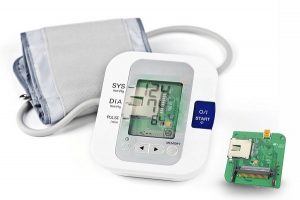

1. Arrangement rules of electronic components
1). Under normal conditions, all electronic components shall be arranged on the same side of the printed circuit. Only when the electronic components on the top layer are too dense, can some electronic components with limited height and low calorific value, such as patch resistance, patch capacitor, patch IC, etc., be placed on the bottom layer.
2). On the premise of ensuring the electrical performance, the electronic components shall be placed on the grid and arranged parallel or vertical to each other, so as to be neat and beautiful. Generally, the electronic components are not allowed to overlap; The arrangement of electronic components shall be compact, and the input and output electronic components shall be kept away from each other as far as possible.
3). There may be high potential difference between some components or wires, and their distance should be increased to avoid accidental short circuit due to discharge and breakdown.
4). Electronic components with high voltage shall be arranged in places that are not easy to touch during commissioning.
5). The electronic components located at the edge of the Board shall be at least 2 board thicknesses away from the edge of the board
6). Electronic components shall be evenly distributed and uniformly dense on the whole board.
2. According to the layout principle of signal trend
1). Generally, the position of each functional circuit unit is arranged one by one according to the signal flow, and the layout is centered on the core electronic components of each functional circuit.
2). The layout of electronic components shall facilitate signal circulation and keep the signal in the same direction as far as possible. In most cases, the flow direction of the signal is arranged from left to right or from top to bottom. The electronic components directly connected with the input and output terminals should be placed close to the input and output connectors or connectors.
3. Prevent electromagnetic interference
1). For electronic components with strong electromagnetic radiation and sensitive electromagnetic induction, the distance between them shall be increased or shielded, and the placement direction of electronic components shall be crossed with adjacent printed wires.
2). Try to avoid the mixing of high and low voltage electronic components and the interleaving of electronic components with strong and weak signals.
3). For electronic components that will generate magnetic field, such as transformers, speakers, inductors, etc., attention shall be paid to reducing the cutting of printed wires by magnetic lines of force during layout. The magnetic field directions of adjacent electronic components shall be perpendicular to each other to reduce the coupling between them.
4). The interference source shall be shielded, and the shielding cover shall be well grounded.
5). In the circuit working at high frequency, the influence of distribution parameters between electronic components should be considered.
4. Suppress thermal interference
1). For heating electronic components, the PCB layout shall be preferentially arranged at the position conducive to heat dissipation. If necessary, a radiator or small fan can be set separately to reduce the temperature and reduce the impact on adjacent electronic components.
2). Some electronic components with high power consumption, such as integrated blocks, high or medium power tubes, resistors and so on, shall be arranged in places easy to dissipate heat and separated from other electronic components at a certain distance.
3). Thermal electronic components shall be close to the tested electronic components and away from the high-temperature area, so as to avoid the influence of other electronic components with heating work equivalent and cause misoperation.
4). When electronic components are placed on both sides, heating electronic components are generally not placed on the bottom layer.
5. Layout of adjustable electronic components
For the layout of adjustable electronic components such as potentiometers, variable capacitors, adjustable inductance coils or microswitches, the structural requirements of the whole machine shall be considered. If it is adjusted outside the machine, its position shall adapt to the position of the adjustment knob on the chassis panel; If it is adjusted in the machine, it should be placed at the place where the printed circuit boards is adjusted.